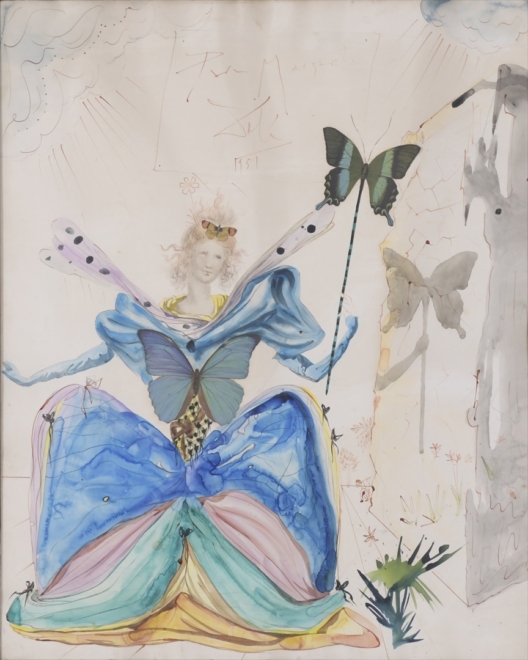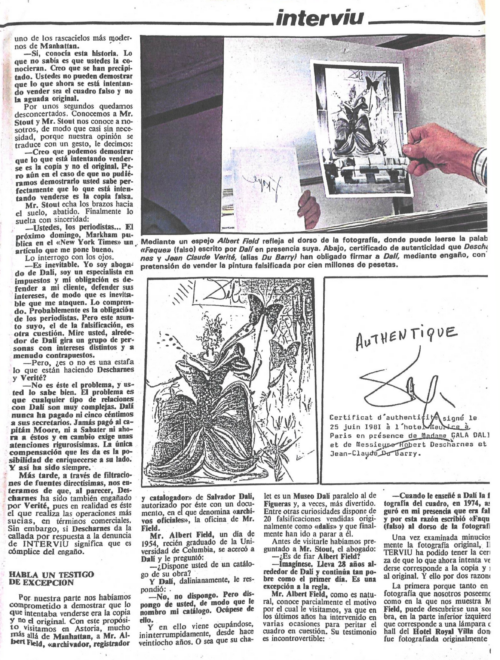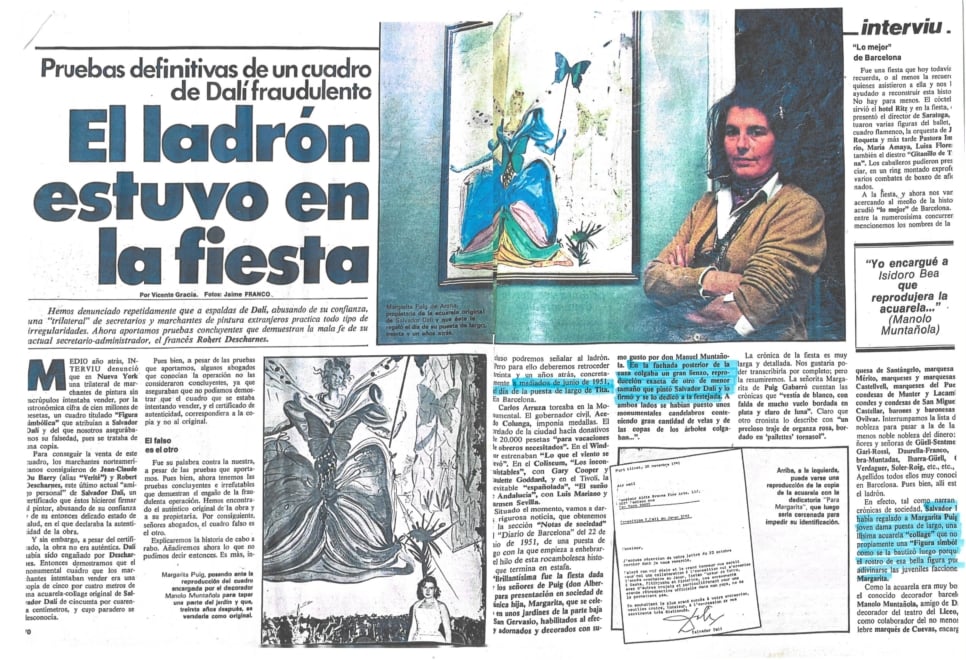

On June 22, 1951, a party was held in Barcelona, attended by most of the Catalan high society and entertainment industry of the time. Dozens of people gathered in the gardens of the newly opened Soler Roig clinic to accompany the Puig family at the opening of their daughter Margarita. But an unexpected protagonist appeared: when they arrived at the site, they were greeted by a fresco seven meters long and four meters wide with a dedication to Salvador Dali.
The artist, a close friend of Albert Puig, Margarita’s father, decided to give him a special gift, not knowing that over the years he would become the center of a journalistic investigation that would question the authorship of some of his works. . . It was not a fresco, but a watercolor, although smaller, but in a good size, which Dali gave to a girl for her big party and which he gave to her at a more intimate dinner at the Ritz Hotel in Barcelona a few weeks ago.
This work so fascinated the Puigs that they asked Manuel Muntagnola, who was in charge of the decoration, to find someone to make a giant fresco out of it and place it in the garden during the main festival. It was Isidoro Bea, a muralist from the Liceu de Barcelona, who reproduced it on “paper covered with theatrical scenery” and inadvertently began a story of theft, forgery and mistrust.

Now, this Thursday, November 30th, this watercolor measuring 73×57 cm called Queen of the Butterflies priced at €100,000, although the Subarna auction house is hoping to raise just over €130,000. Thanks to this, the scandalous story of the mural, which was never seen again after that party and which reappeared in the seventies on the other side of the Atlantic Ocean, was again in the news. It’s a scam that went on for years and ultimately put Gala in the middle of a target.
“The same day the fresco disappeared, but the Puig family decided not to report anyone, because although they had suspicions as to who it could be, they were all friends of the family and members of either the entertainment industry of the time or the Catalan elite . class,” explains the auction house. Additionally, they heard nothing about the mural for decades and kept the secret until the late 1970s, when Interviú magazine contacted them.
“After Franco’s death, when the watercolor was already in the living room of the elder Margarita, Interview They receive notice from Dali’s dealer, Albert Field, who tells them the mural is in a hotel in North Carolina, and that’s when the magazine decides to investigate,” they say.

They discover that the hotel is called “Royal Villa” and that the work was bought by American millionaire Mr. Johnston in April 1974 as an original Dali work. “He bought it in Mexico for $15,500, one and a half million pesetas. (…) But in the end Johnston found out that he had been deceived (that the work was a fake) and three years later he put the painting up for sale at a public auction, which was accepted participation of 125 individuals, museums and corporations,” the magazine says. Interview since the end of that decade.
They also said that no one wanted to buy it for what he was asking and that an art appraiser named R.L. Chick offered him €5,000, knowing it was a lie as Field had told him. “But it didn’t end there: a few months later, Chick sold the painting to William Mett, president of the Center Art Gallery in Honolulu (Hawaii), for the sum of $50,000, five million pesetas, like a genuine Dali,” he continues. – article special envoy Interview Vicente Gracia.
Matt soon realizes the fraud and sues Chick, demanding $300,000 in damages. “Nothing was heard of the counterfeit painting for many years until we discovered,” they stated in the magazine, that they were trying “to sell it again for a hundred million pesetas and that the seller produced an unusual document that literally read: “Certificate of forgery.” authenticity”, signed on June 25, 1981 at the Hotel Meurice in Paris, in the presence of Mrs. Gala Dali.”
Moreover, it was Jean-Claude DuBarry and Robert Descharnes, Dalí’s last personal friend, who brought him a false certificate for confirmation. “They signed it to the artist, abusing his trust and his then fragile health. In it, he claimed the authenticity of the work, although it was not genuine. Dali was deceived by Desharnes, and he enjoyed the protection of Gala,” they said. adding to the scandal and casting doubt on the authenticity of other works by the Catalan artist.
But there was still a mystery: who stole the mural from the party and sold it for the first time? It took the magazine some time to discover these first steps, but in the eighties they learned that although Gala was the last to “falsify” authorship, she was by no means the first.

In an article entitled The thief was at the party In 1971, three years before the first fraudulent sale of a copy commissioned by Isidoro Bea was exposed, a man attending a party received an image in which Salvador appeared from a collection of photographs that Margarita Puig kept in her home. before the reproduction, which undoubtedly made it easier to sell the fresco as genuine. “He was an inexperienced, ‘long live the virgin’ conman who had as much ambition as he had few remorse,” they then write, suggesting that the mural was stolen by a family friend who kept the copy secret for almost a long time. twenty years and thus closing it, the circle of scandal.
Now that the fresco is still in private hands, the watercolor that started this whole story and which passed through the hands of various members of the Puig family is up for auction. “They decided to sell it because it was the only way to divide the inheritance,” they say. “These days people have come to see it with great interest, we know that watercolors are less attractive than oil paintings, but we may be surprised,” they say, knowing that the history of this party, this mural and these certificates evokes a certain enthusiasm.
Source: El Independiente